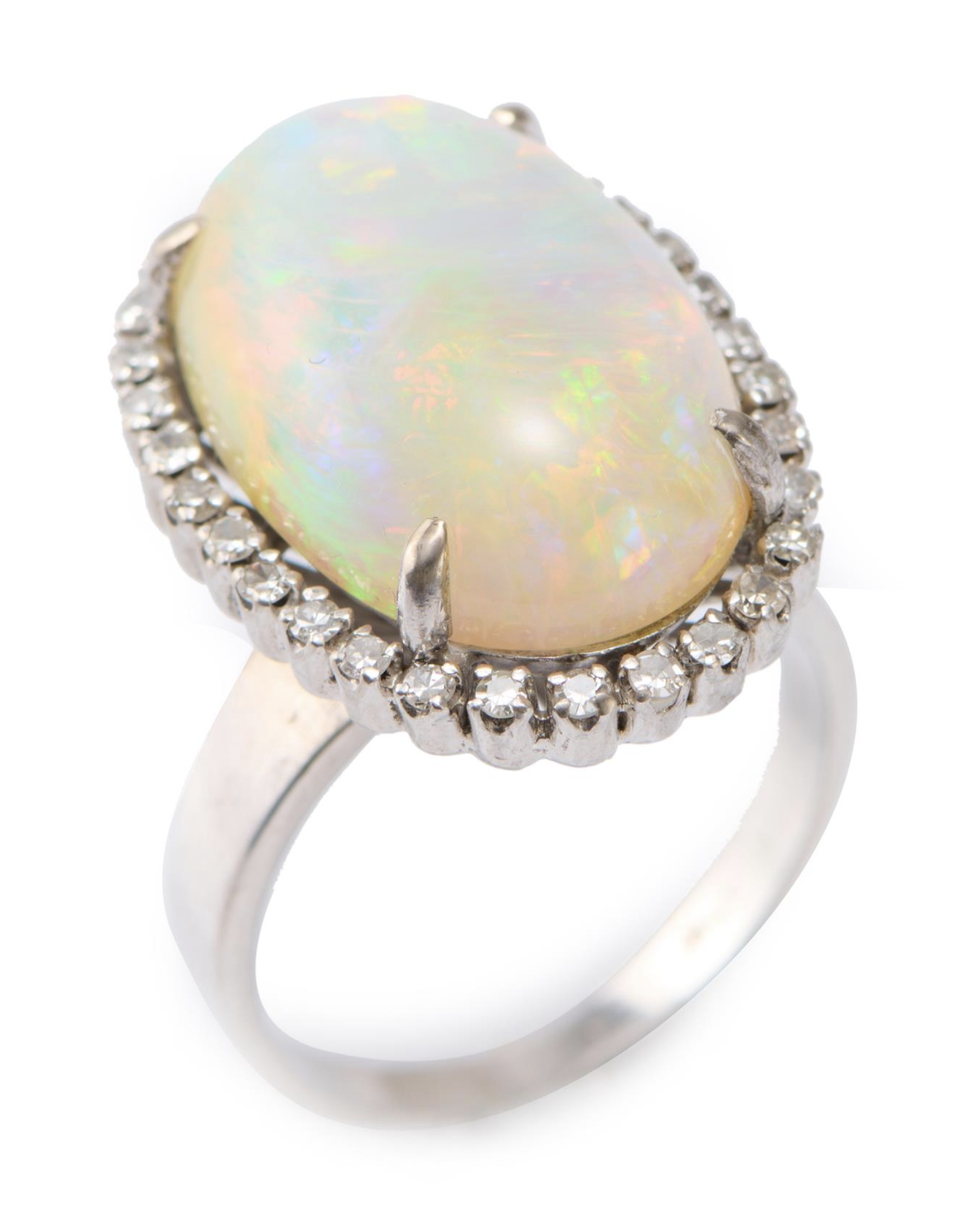
Opals have a history and lore as colourful as the play-of-colour phenomena they exhibit. Greek mythology records that opals were the physical result of Zeus’ tears of joy, rolling down to earth upon taking his seat as King of the Gods after a decade long war fighting to overthrow his father and the Titans. One Aboriginal Dreamtime story tells of the ancestral being the Creator, sent to earth to convey the laws of the land via a rainbow; opals forming where the rainbow connected with the earth. Other folklore is not quite as romantic. Alfonso XII, King of Spain in the late 19th Century, became convinced opals were cursed after losing his wife, grandmother, sister and sister-in-law in a chain of tragic circumstances. Despite infectious diseases being rife at the time, an opal set ring gifted to him by a jilted lover and regifted to the unlucky family members was established as the only possible and thus undeniably calamitous link.
The time it takes for opal to form is long to say the least. Approximately 5 million years of spheres of silica settling in the earth in ideal conditions may result in a thread of precious opal one centimetre thick. Precious opal is that which shows ‘play-of-colour’, the flash of spectral colours created when light passes through gaps between the silica spheres of the same size laid in an orderly manner. Common opal, also known as potch, has no play-of-colour. Its silica spheres are not uniform in size or arrangement and interrupt the wavelengths of light too much to be visible to the human eye as spectral colours.

Precious opals can be classified by varying degrees of body tone and transparency. Body tone can be black, dark, or light and transparency described as opaque, translucent, or transparent. Precious opals that are at the latter end of the translucent/transparency scale but still show play-of-colour are known as crystal opal. Generally, opals with a black body tone that display flashes of red/orange as their dominant play-of-colour are the rarest and therefore most valuable. This is because the larger gaps between the silica spheres required to create red/orange take longer to form, are less common and the contrast between the black background and the red/orange is more dramatic.

Precious opal can also exist as boulder or matrix opal. The former referring to the opal being attached to a ‘host’ rock (boulder) of different composition; the seam of opal too thin to cut without the host. Matrix opal takes on the appearance of opal ‘veins’ throughout the differing mineral grains a host rock.
If not solid, boulder or matrix opal, the type of composite needs to be disclosed as doublet, triplet, or mosaic:
- Doublet opals – a thin layer of natural opal cemented to a dark base
- Triplet opals – a thin layer of natural opal cemented to a dark base with a transparent top layer (generally glass or quartz)
- Mosaic opal – irregular shaped chips of natural opal cemented to a dark base and sealed with resin
The use of lab created opals, first marketed by Pierre Gilson in 1974, must also be disclosed. Not entirely synthetic (the same chemical composition, internal structure, physical properties and appearance as the natural counterpart) they are in fact simulants containing materials not found in the natural stone. Lab created opals can be recognised by their regular colour pattern in contrast to the irregularities of the natural stone they simulate in addition to not fluorescing under UV light.

Not long after the first discovery of opal in Queensland in the late 1800s, Australia took the reigns as the world’s largest supplier of precious opal. This is still the case today with South Australia recognised as producing 80% of the global supply. Slovakia and Mexico have major production mines in operation with Nevada, Honduras, Brazil and Indonesia producing a moderate amount. Ethiopia, Peru, and Somaliland contribute a minor portion to the global percentage. The geology of the differing locations greatly influences the quantity and type of opal produced in each. For example, black opal is mined on a large scale in Australia due to the vast deposits of clay with high iron content, the predominant mineral contributing to the dark blue/black background of the opal considered the most valuable type.
Lately opals seem to have had a resurgence in popularity; negative mythology perhaps overshone by more in-depth, accessible and undoubtably impressive information regarding their formation. Monikers such as ‘Nature’s Kaleidoscope’ certainly provide a more positive foundation with Harper’s Bazaar suggesting last year that they are a strong contender to replace other coloured stones and even diamonds as the feature stone in an engagement ring, albeit for “the more unconventional bride”. Whatever your thoughts, with NASA’s announcement of the discovery of opal deposits on Mars, they are indisputably ‘out of this world’.
HANNAH SASS / Jewellery Salon Manager
September 2021
